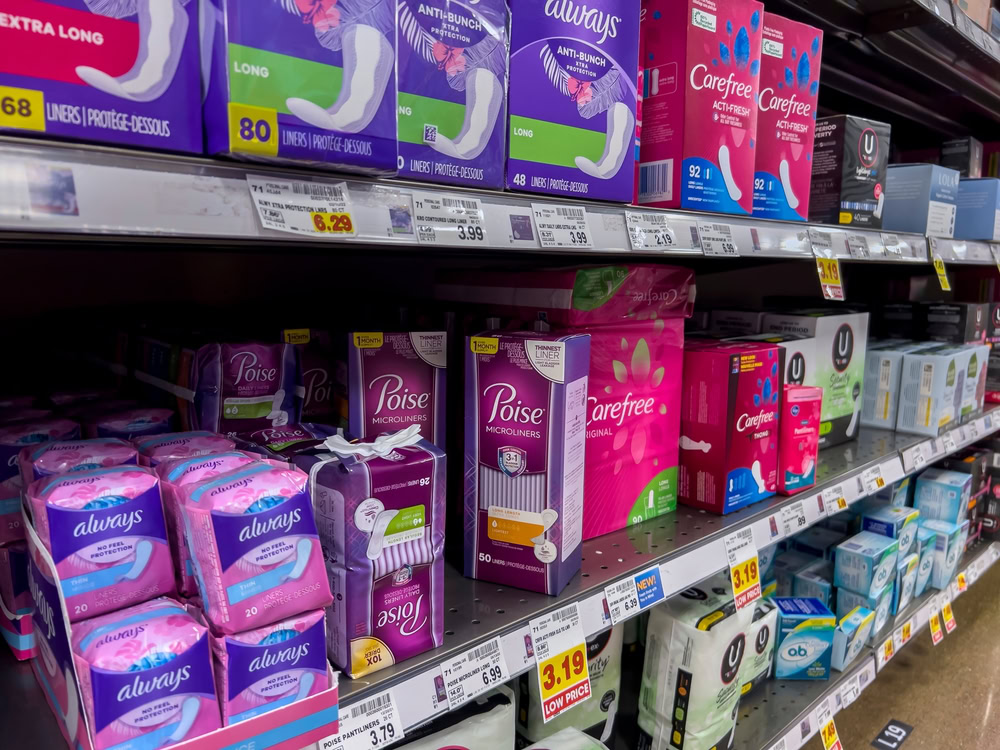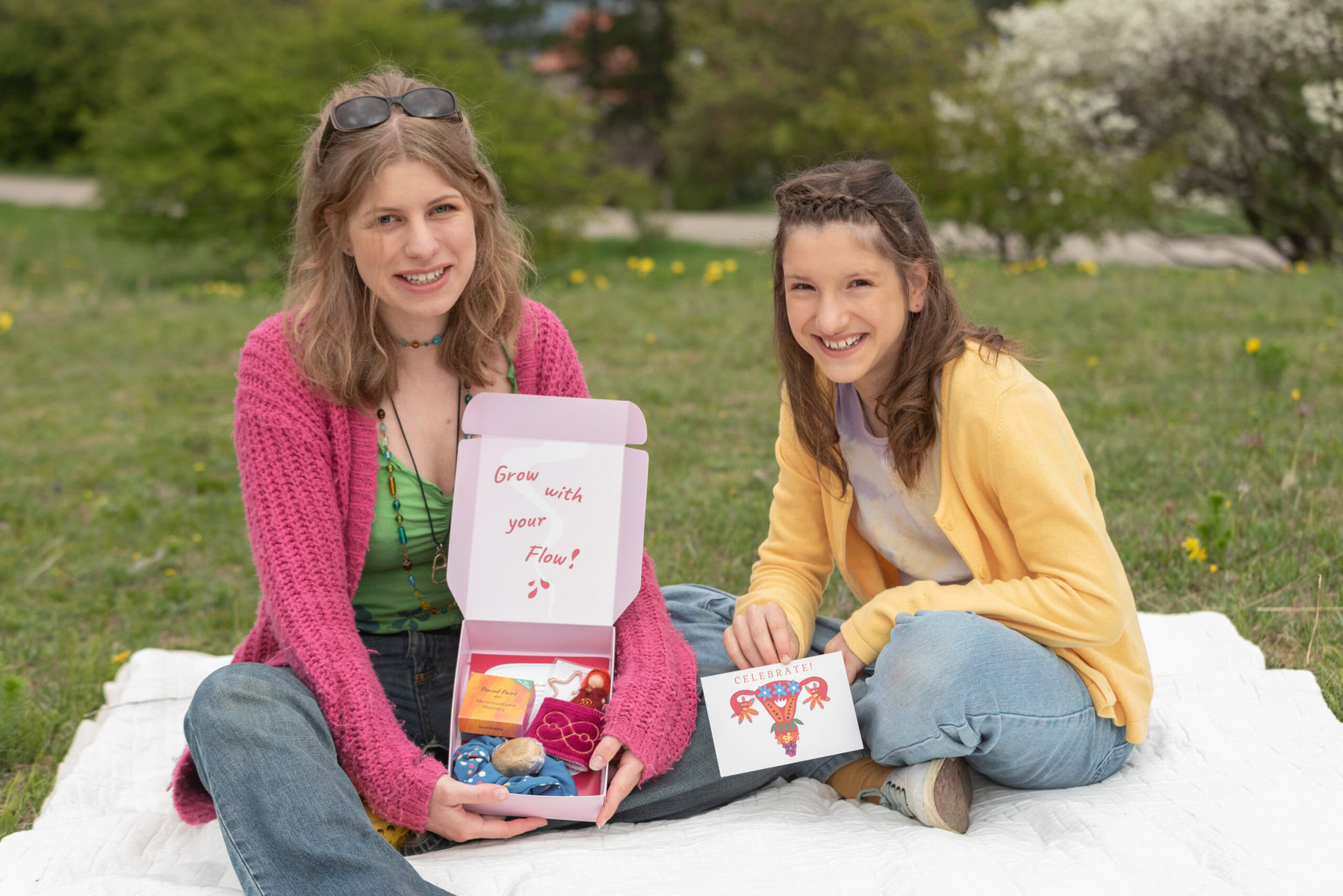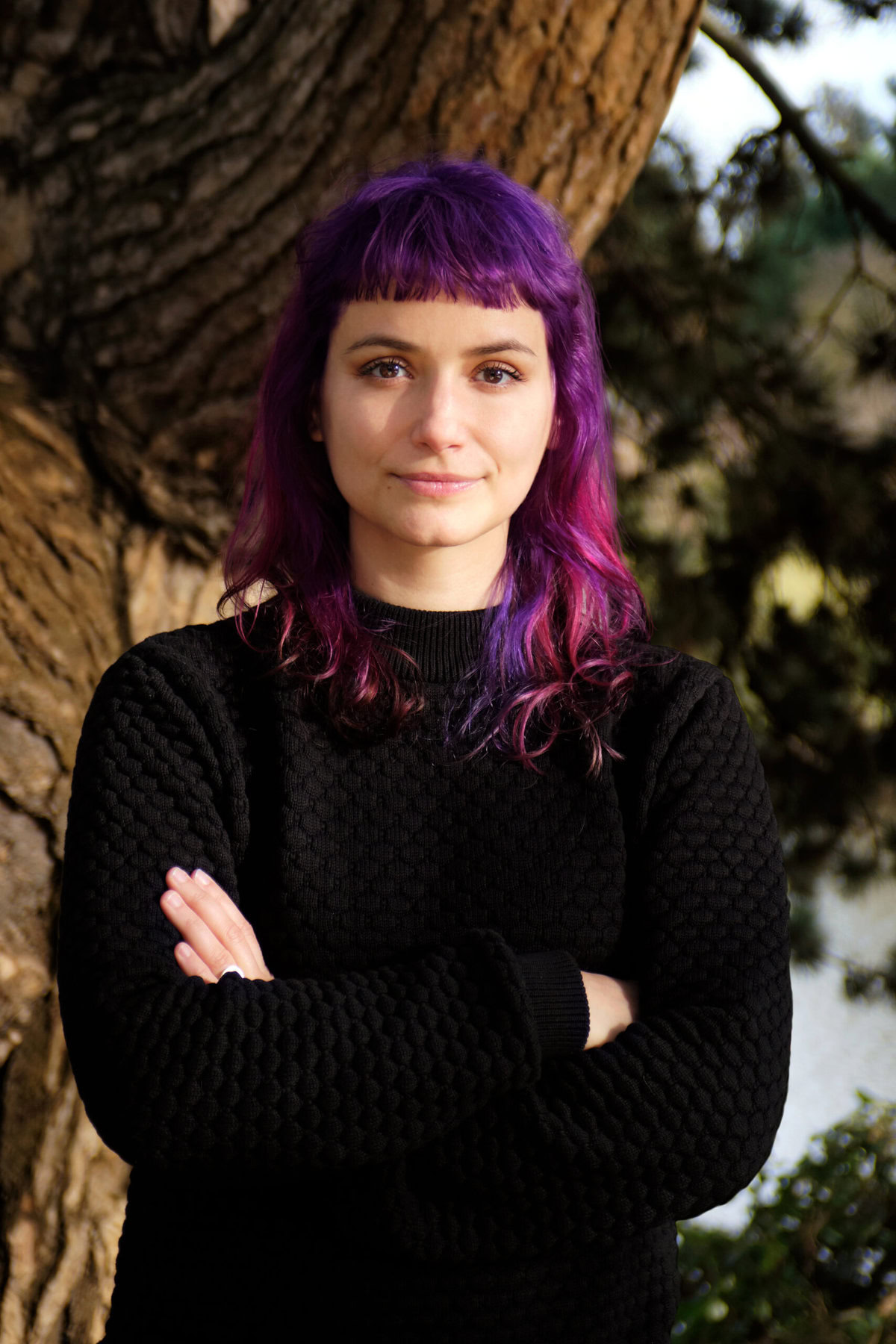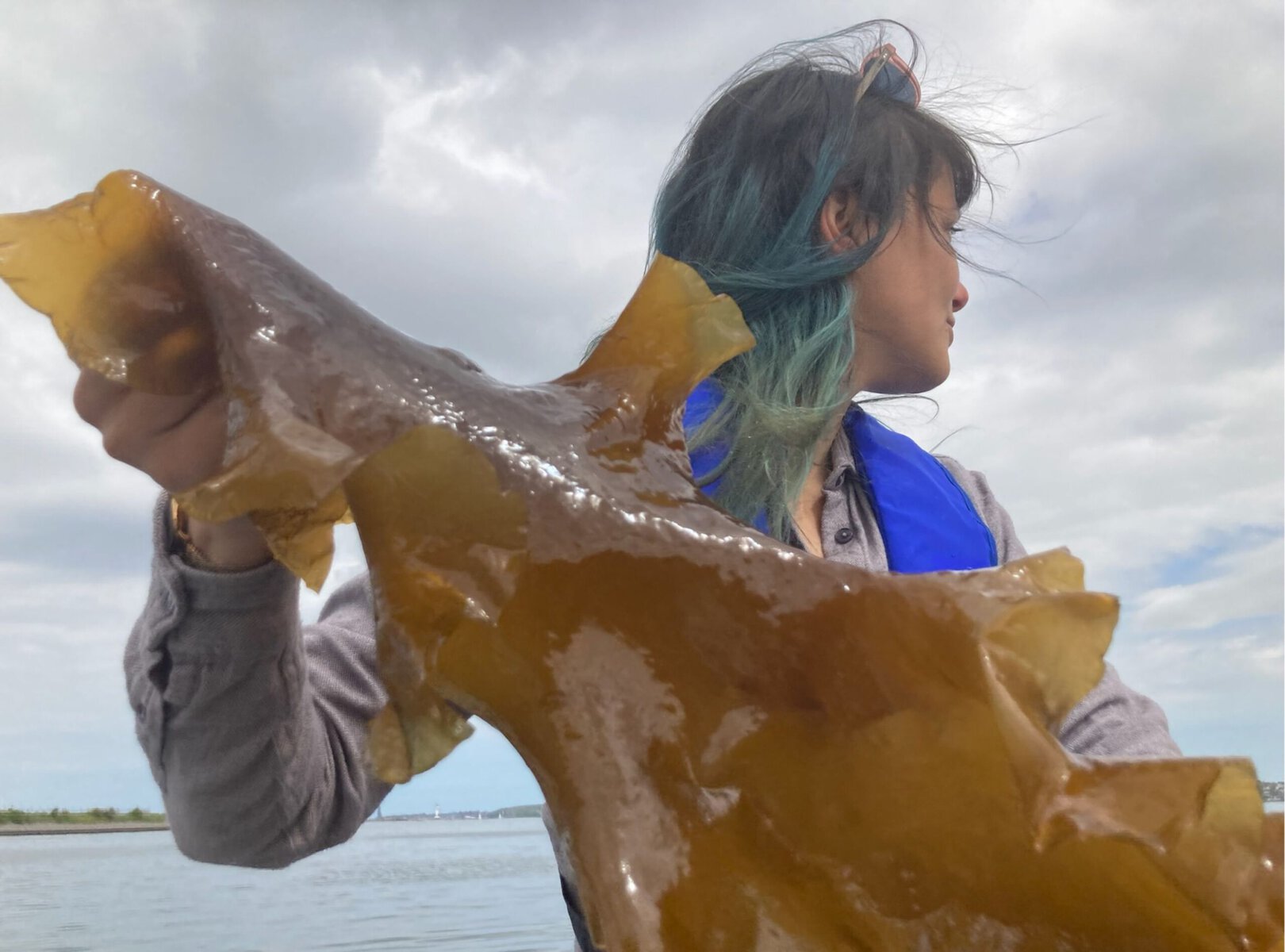We menstruators are trash monsters. Every month, every one of us uses dozens of tampons, pads or liners. Almost none of it is recyclable, and each year, plastic menstrual products add up to more than 200,000 tons of waste that ends up in landfills or gets burned. It’s the classic quandary of single-use plastic: We only use it for a few hours, but it takes 500 years to disintegrate.
Like most of us, when I started my period, I was more preoccupied with the sudden changes in my teenage body than the long-term changes on the planet. I used the plastic-wrapped tampons and plastic-lined liners that everybody else used, too.
After I began reporting on plastic pollution and climate change, it bothered me that most period products contain plastic, and not just in the wrapping. Even if you don’t buy tampons with plastic applicators, the tampons and strings might incorporate polypropylene, polyethylene or polyester — in other words, plastic.

So I switched to period products that were marketed as ecologically sustainable: liners and tampons made of organic cotton.
However, two issues quickly became apparent: The “ecological” varieties easily cost double or triple as much as cheaper plastic products. It is worth remembering that an estimated 500 million menstruators around the world experience “period poverty” and don’t have easy access to products. Even in the wealthy US, about 16.9 million do not have the money to buy period products each month, let alone costly ones. It’s a choice only for the wealthy.
And even if you have the money, the label “organic cotton” on period products doesn’t automatically mean they are truly sustainable. Most pads and liners still have a plastic layer attached to make them leakproof; cotton is a very water-intensive crop, usually bleached with chlorine or peroxide; and we’re still creating heaps of trash.
“Ninety years since the first Tampax, why aren’t there better menstrual products?” a writer for The Guardian wondered in 2023. One reason, of course, is profit: Plastic products are cheap, and by convincing women that disposable products are the “modern, clean” way, companies hooked generations of customers who reliably buy the same product month after month. On average, a woman stays with the same period product for 10 years.

However, the tides are changing. The “sustainable menstruation” movement is gaining traction.
As a young woman, I recall speaking in code about “strawberry week” or “Aunt Rosie’s visit” and hiding tampons on the way to the bathroom. I remember how deeply impressed I was when I attended a large 40th birthday party, and the birthday girl announced loudly at the table, “Hey, I need a tampon. Does anyone have one for me?“
She was right: Why not ask openly? Why would menstruation, the most natural thing in the world, be a cause for shame, or something to hide?
Angelika Burgsteiner, who last year opened the first menstruation shop in Austria, Rotmarie (“Red Mary”), sees shame as one reason there are so few innovations: “As women, we haven’t demanded them loudly and openly enough.” In her shop, she offers books about women’s cycles for all ages, uterus-shaped cookie cutters and dozens of ecological alternatives to conventional period products.
Burgsteiner, mother of a daughter, developed an interest in the topic when she realized that there was no age-appropriate guide for young girls getting their first period. So the trained journalist and sinologist designed and created a gift box with information and products for first-timers, titled “It’s time to celebrate.” She and other women also organize “period parties” that celebrate menstruation.
But it’s still a taboo topic in many circles. Burgsteiner opened the shop because “there was no place where you could go to get information.” She reports that she gets “unspeakably aggressive, vile comments” on social media — “mostly from men, but from some women, too.”
Such feelings have deep roots. Of course, rags have been used for millennia — coupled with the fear they might leak. But as long as people have been menstruating, the blood has often been regarded as “bad blood,” even toxic, dirty, and shameful, in cultures from ancient Greece to the modern-day United States.
Weighed down by negative news?
Our smart, bright, weekly newsletter is the uplift you’ve been looking for.When I visited rural areas in Asia in the last decade, I still saw “menstruation huts“ — cabins outside the main villages where women have been sent to wait out their monthly time for countless generations. Even in the US, conservatives sometimes oppose the offering of free period products in schools, with one representative asking, “Why are our schools obsessed with the private parts of our children?”
While schools offer toilet paper without hesitation, menstruation is obviously still considered not as natural as peeing and pooping.
The stigma is partly responsible for the amount of individual packaging that conceals the products, enhancing the perception of cleanliness, as well as the artificial scents that seek to mask any odor. According to a 2022 study, single-use period products are the most commonly found waste on beaches and shores.
Clearly, reusable options are the most sustainable, but current ecological offerings leave much to be desired. For instance, Thinx marketed its period underwear as “sustainable and non-toxic” and quickly became popular with more than a million users, but in 2022, the company settled a class-action lawsuit after being accused of hiding harmful “forever chemicals” in its panties. The EPA has found that these short chain per- and polyfluoroalkyl substances (PFAS) can be linked to “harmful health effects in humans” and contribute to decreased fertility, increased risk of certain cancers and hormonal disruption.
And it’s not just Thinx. When the consumer watchdog sites Mamavation and Environmental Health News partnered on a study, they found 48 percent of sanitary pads, incontinence pads, and panty liners their lab tested were contaminated with PFAS and other chemicals. This was also true for 22 percent of tampons and 65 percent of period underwear. PFAS are ubiquitous now and even found in our drinking water, but the proximity to our most private parts makes the question of how harmful they are even more urgent — and period products are largely unregulated. Manufacturers are not required to disclose the chemicals used in producing them.
Burgsteiner has dozens of different bright pink, red, blue and black period knickers in her shop. “I think women need to feel and touch the material, how it’s cut and fits,” she says. “When I first ordered period underwear online, it reeked of chemicals, and the plastic was uncomfortable to wear.” She now uses Natana underwear that is sewn from organic cotton by a German woman she knows. “You can change the reusable pads with a velcro fastener,” Burgsteiner explains, “and just wash everything with your normal laundry.” However, it still contains a thin layer of plastic. According to Burgsteiner, another small brand, Kulmine, manages to forgo plastic entirely by sewing in layers of extremely fine cotton.
According to a 2022 study by Einhorn, a German producer of menstruation cups, tampons and condoms, menstruation cups turn out to be a much more sustainable choice than disposable products. Though they are usually made from medical grade silicone, plastic or greener alternatives such as natural caoutchouc, they can be used for years. Einhorn found that most of the cups’ environmental imprint is due to the necessary cleaning or boiling, but still concluded the cups were 63 to 79 percent more ecological than tampons and pads. The European environmental organization City to Sea found that if just 20 percent of people in the EU used a menstrual cup instead of single-used items, it would prevent 100 tons of waste across the 27 EU states every year.

I’ve tried using a cup myself, but as a journalist, I’m on the road a lot, and I’ve found they aren’t ideal for travel. Despite my hopes that we can remove the shame and stigma from menstruation, washing a bloody cup in a public bathroom is just not something I feel comfortable doing.
New products are slowly emerging. This summer, a biodegradable “Tangpon” or “Kelpon” made of seaweed will hit the European market. Her love of the ocean inspired Vyld CEO Ines Schiller, a certified marine guide and neuroscientist in Berlin, to create it. Instead of polluting the oceans, tangpons rely on them for an organic solution. Marine algae are naturally soft and absorbent, so Schiller developed a tampon with a biopolymer extracted from marine algae, then processed into fibers. The samples she sent me look like any other tampons. They are organically white and don’t need to be bleached, the German startup promises. The tangpon still contains 20 percent cotton and arrived wrapped in plastic, but the startup says it’s aiming to find a biodegradable alternative and get to 100 percent algae content.
Burgsteiner has an even more natural solution in her shop’s assortment that she also uses herself: sea sponges. “You can use it like a tampon,” she explains and demonstrates how the yellow naturally absorbent sponge can be squeezed into a tiny package. “You don’t even feel it’s there, and it can be washed and reused for up to a year.”
I immediately asked my gynecologist about it, and she explained that almost all her non-pregnancy-related emergencies are because the sponges can “disappear” into cavities where a woman can’t retrieve them by herself. However, this problem can be solved easily by attaching a string.
That’s not the only concern when it comes to sponges. Critics quote a nearly 30-year-old study that found sand and bacteria in the sponges. Ever since, the FDA has considered them not suitable to be sold as menstrual products, though little further research has been done.
But with blunt honesty, Angelika Burgsteiner gives another reason why ecological menstruation products are not gaining more traction: They don’t make money. Nobody profits off them because they are cheap and reusable. “Honestly,“ Burgsteiner says, “I don’t even bring the sponges to the fairs anymore because they hardly cost anything, and it’s a financial loss.”

Burgsteiner believes that “no matter which method a woman chooses in the end, the fact itself that we are asking questions, listening to what’s good for our bodies and speaking with other menstruators about it, we’re already on a more sustainable path.” She continues to be surprised, by “how many grown-up women don’t really know what actually happens in their body when they menstruate,” she says. “The first step is to value our body more, and then it’s a natural consequence that I don’t want to insert any crap I don’t even know what exactly it is made of.”
The most moving encounters Burgsteiner observes in her shop are the visits of grandmothers with their granddaughters. “They often say, ‘We couldn’t talk about it when I was young, but I want my granddaughters to start out differently,’” Burgsteiner says. “And then they ask me to repeat the word vulva five times because they are so fascinated by hearing it said out loud for the first time.”
Burgsteiner soon wants to extend her product lines to include sustainable offerings for incontinence because conventional pads and diapers have much the same plastic and pollution problems as menstruation products, and she finds that women are increasingly asking for products they can use after menopause.
Let the innovations flow.



